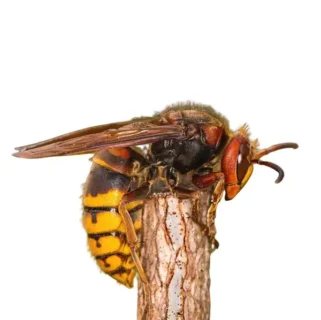Carpenter Bees in McAlpin
Carpenter bees create chambers in wood to raise their young. They create these chambers through the habit of boring into wood. Bumblebees and carpenter bees are the largest native bees in the nation. The carpenter bee can be found predominantly across the southern United States (Arizona to Florida) and in the eastern United States. Carpenter bees excavate tunnels in wood, especially in dry and weathered lumber. They do not eat the wood, but bore through it, causing damage to the wood.
Carpenter Bee Habitat
Carpenter bees are a reclusive insect that creates private nests in trees, sides of structures, or eaves. A sign of a carpenter bee infestation includes noticing a large amount of pollen and sawdust on the ground. Their work at chewing and excavating the wood in structures or trees is how these piles are formed below. Males and females will nest in old tunnels through the winter and then emerge to mate in the spring. Once the female has mated, she will locate suitable wood to construct her nest. Meanwhile, the male will spend most of his time around the nest site. Once the female excavates a gallery with her mandibles, she will furnish her nest with “bee bread” (a mixture of pollen and regurgitated nectar). After this, she will deposit her egg, and close the cell with chewed wood pulp.
Carpenter Bee Behaviors, Threats, or Dangers
It is rare for female carpenter bees to be aggressive, but they will do so if feeling threatened. Allergies to bee venom apply to the carpenter bee and medical attention is advised for a carpenter bee sting. Although male carpenter bees do not have a stinger, they will still behave aggressively towards a threat to the nest. Although carpenter bees can be helpful pollinators, they can cause significant damage to structures. Wooden siding, windowsills, railings, decks, fences, and outdoor furniture are susceptible to carpenter bee wood excavation. Individual excavation for carpenter bees may be minimal, however, numerous bees over the years can result in substantial damage. If you suspect a carpenter bee infestation, it is recommended to contact a bee control professional.
Need help with Carpenter Bee control?
Need Pest Control Service?
Leave your information below and we’ll be in touch with a FREE quote!
"*" indicates required fields
*During normal business hours. After hours calls will be returned the next business day.





